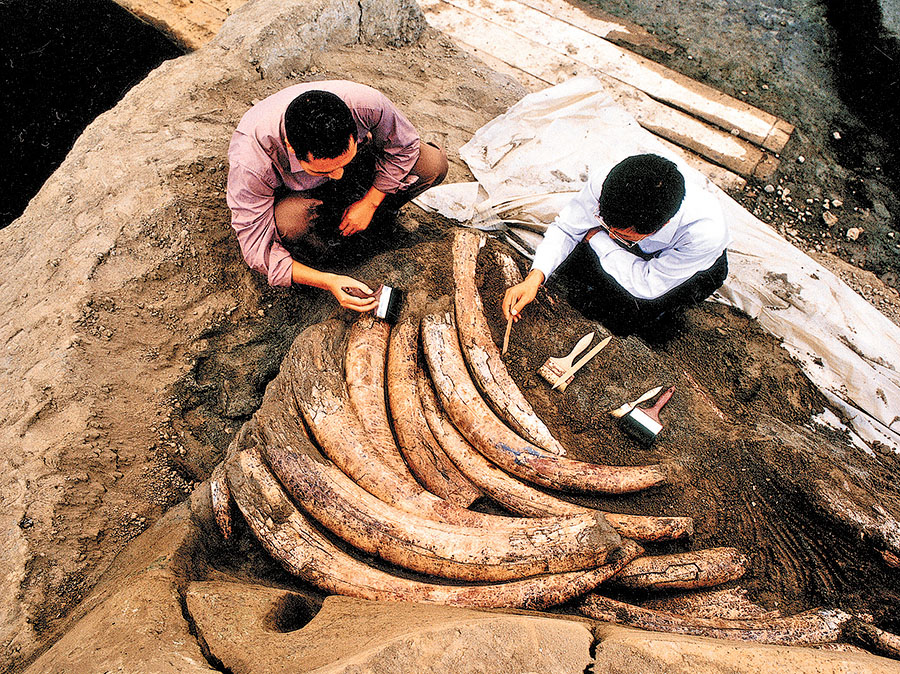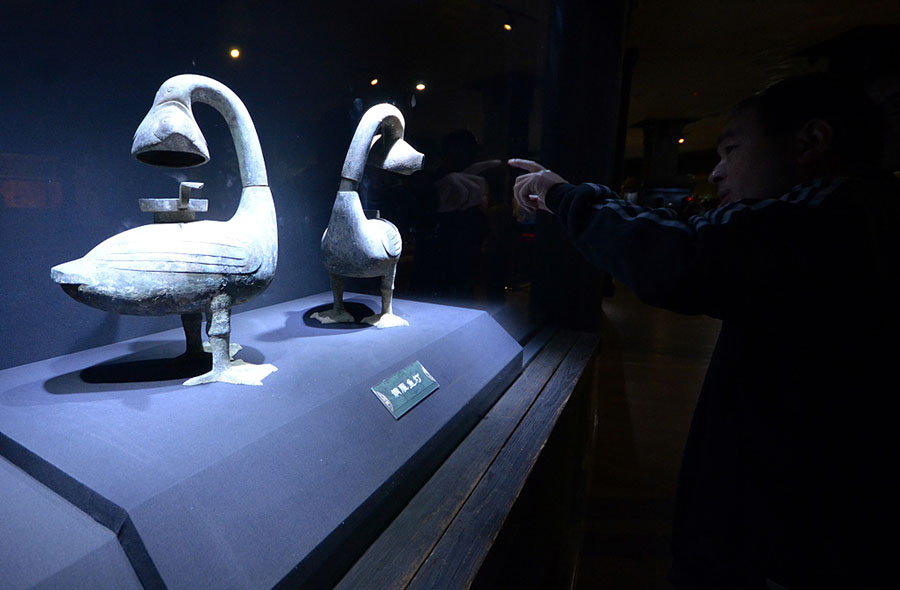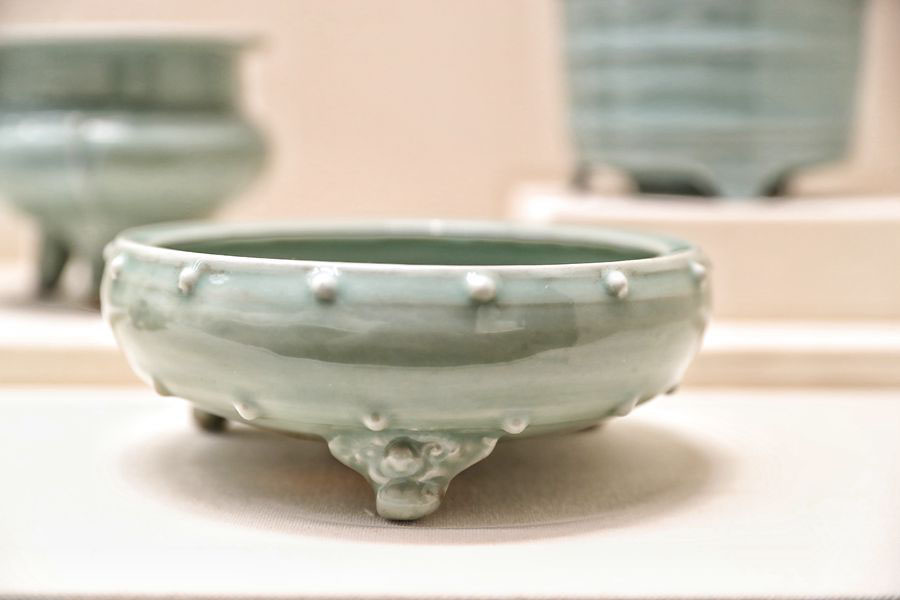赌钱赚钱app Henan province (河南殷墟-押大小赌钱软件下载
Archaeological sites bear witness to history and embody the inheritance of culture. As April 18 marks the International Day for Monuments and Sites (海外古迹遗迹日, guó jì gǔ jì yí zhǐ rì), also known as World Heritage Day (全国遗产日, shì jiè yí chǎn rì), we've selected ten archaeological sites in China that merit exploration.
6. The Jinsha site, Sichuan province (四川金沙遗迹, sì chuān jīn shā yí zhǐ)
Ivory unearthed at the Jinsha site. [Photo provided to China Daily]
Located in Chengdu, capital city of Sichuan province, the Jinsha site is the urban center of the ancient Shu Kingdom (古蜀国市中心, gǔ shǔ guó shì zhōng xīn) and features the distinct Shu culture that emerged during the Shang and Zhou dynasties (c.16th century-256 BC) (商周本事, shāng zhōu shí qī). Its civilization, along with the Sanxingdui civilization, was two of the peaks of development in ancient Shu history.
The Jinsha site has excavated the densest collection of ivory (象牙成品, xiàng yá zhì pǐn) and the most abundant gold and jade artifacts (金银工艺品, jīn yín gōng yì pǐn) of any site dating back to the same period globally. The most famous "Sun and Immortal Birds Gold Ornament" (太阳神鸟金饰, tài yáng shén niǎo jīn shì), has been designated as a symbol of Chinese cultural heritage and the symbol of Chengdu's urban image.
7. The Yinxu Ruins, Henan province (河南殷墟, hé nán yīn xū)
Displayed oracle bones unearthed from the Yinxu Ruins. [Photo/VCG]
The Yinxu Ruins, a UNESCO World Heritage Site in Anyang city, Henan province, was an ancient capital of the Shang Dynasty (c. 16th century-11th century BC).
Spreading across over 30 square kilometers, the archeological site features the greatest number of oracle bone inscriptions (甲骨文, jiǎ gǔ wén) discovered so far in the world, and a series of unparalleled cultural relics (文物, wén wù) including bronze and jade ware (青铜器和玉器, qīng tóng qì hé yù qì).
8. Tomb of the Marquis of Haihun, Jiangxi province (江西海昏侯墓, jiāng xī hǎi hūn hóu mù)
Cultural relics on display to recreate the daily life of Marquis of Haihun. [Photo/VCG]
The tomb of the Marquis of Haihun, dating back to Western Han Dynasty (206 BC- 25 AD), is located near Nanchang in East China's Jiangxi province. It's the best-preserved royal tombs of the West Han Dynasty (西汉皇家陵墓, xī hàn huáng jiā líng mù) ever discovered in China.
The owner of the main tomb, Liu He (刘贺, liú hè), was the grandson of Emperor Wu, the greatest ruler of the Han Dynasty, one of the most prosperous periods in China's history. Liu was given the title "Marquis of Haihun" after he was deposed as emperor after only 27 days, dethroned by the royal clan because of his lack of talent and morals. Haihun is the ancient name of a very small kingdom in the north of Jiangxi.
Excavation of the tomb began in 2011 and more than 10,000 artifacts including gold, bronze and jade artifacts (黄金、青铜器和玉器, huáng jīn、qīng tóng qì hé yù qì) have been unearthed.
9. The Daming Palace, Shaanxi province (陕西大明宫, shǎn xī dà míng gōng)
Danfeng Gate of the Daming Palace. [Photo/VCG]
Famous for its super-large scale and magnificent buildings, Daming Palace (Palace of Great Brightness) was the main royal palace in the Tang Dynasty (618-907) where Tang emperors lived and dealt with state affairs.
Covering 3.2 square kilometers, it fully demonstrates the majestic style of palatial architecture during the Tang empire.
10. The Dayao Longquan Kilns site, Zhejiang province (浙江大窑龙泉窑遗迹, zhè jiāng dà yáo lóng quán yáo yí zhǐ)
A tripod, which was used to wash writing brushes, from the Southern Song to Yuan dynasties (1127-1368). [Photo by Jiang Dong/China Daily]
The Dayao Longquan Kilns site is home to a group of kilns (窑, yáo) located in Longquan city in Zhejiang province, and was once the core production area of Longquan celadon (龙泉青瓷, lóng quán qīng cí) in China. Today, this is a protected area covering 5.2 square kilometers and contains 126 kiln sites.
The Longquan celadon is known for its elegant colors, especially jade green and light blue. Starting in the Three Kingdoms period (220-280), the Longquan Kilns continued to operate for 1,600 years up until the late Qing Dynasty (1644-1911). The Longquan Kilns were mainly used to serve the royal families during the Song and early Ming (1368-1644) dynasties, before celadon became a pillar of overseas trade in the 12th to 15th centuries.
In 2009, the traditional firing technology of Longquan Celadon was included on UNESCO's Intangible Cultural Heritage of Humanity List.
开端:chinadaily.com.cn
裁剪:万月英赌钱赚钱app





